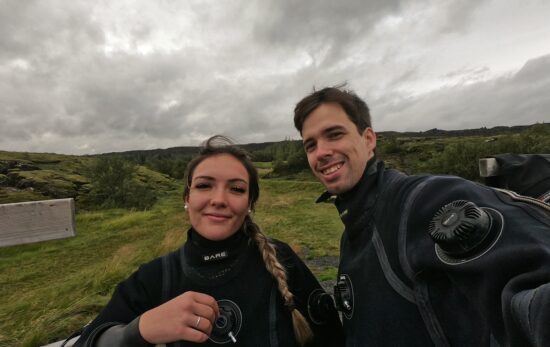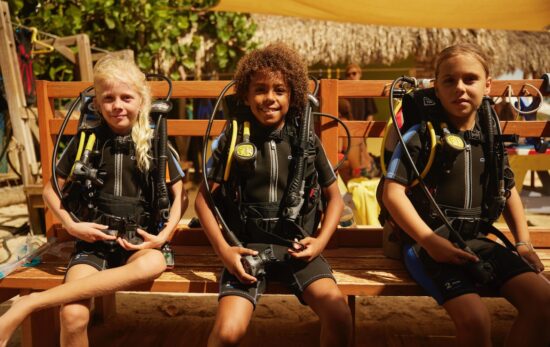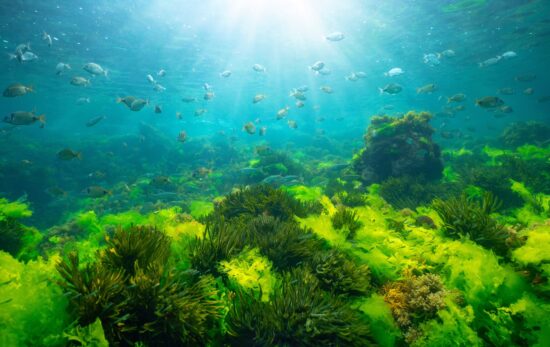I have only experienced love at first sight once, and I’m not ashamed to admit it was with a fish, more specifically the world’s biggest fish, the whale shark! When I first came to Maldives, as a volunteer of Maldives Whale Shark Research Programme (MWSRP), the experience was the catalyst for my fascination with this iconic, endangered shark. Now working in the role of Lead In-Field Coordinator at MWSRP, a registered charity and Maldivian NGO, my job is one that involves a lot of different skills. One of the most valuable, physical skills in my artillery is freediving. While it is certainly possible to scuba dive with these gentle giants, I find that freediving really lends itself to encountering a whale shark for a variety of reasons. For the most part, when humans interact with these sharks in South Ari Atoll, it is mostly in the shallows where they come to thermoregulate after their deep dives. Sometimes whale sharks will cruise consistently at the surface for a while, other times they will parabola dive up and down in the water column. If you’re especially lucky, some individuals may even follow you out of curiosity. Regardless of the behaviour, my personal feeling is that the freedom from scuba equipment and safety stops accommodates whale shark viewing.
Recently, after completing a formal recreational freediving course, I have become much more confident in my skills and relaxation methods which ultimately feed into more efficient collection of data during our whale shark encounters. Photo ID forms the backbone of MWSRP’s data collection efforts as each whale shark has a spot pattern which is unique to each individual, akin to a human fingerprint. When I enter a whale shark encounter, my priority is to photograph the left and right side flank of the shark for that all important ID.
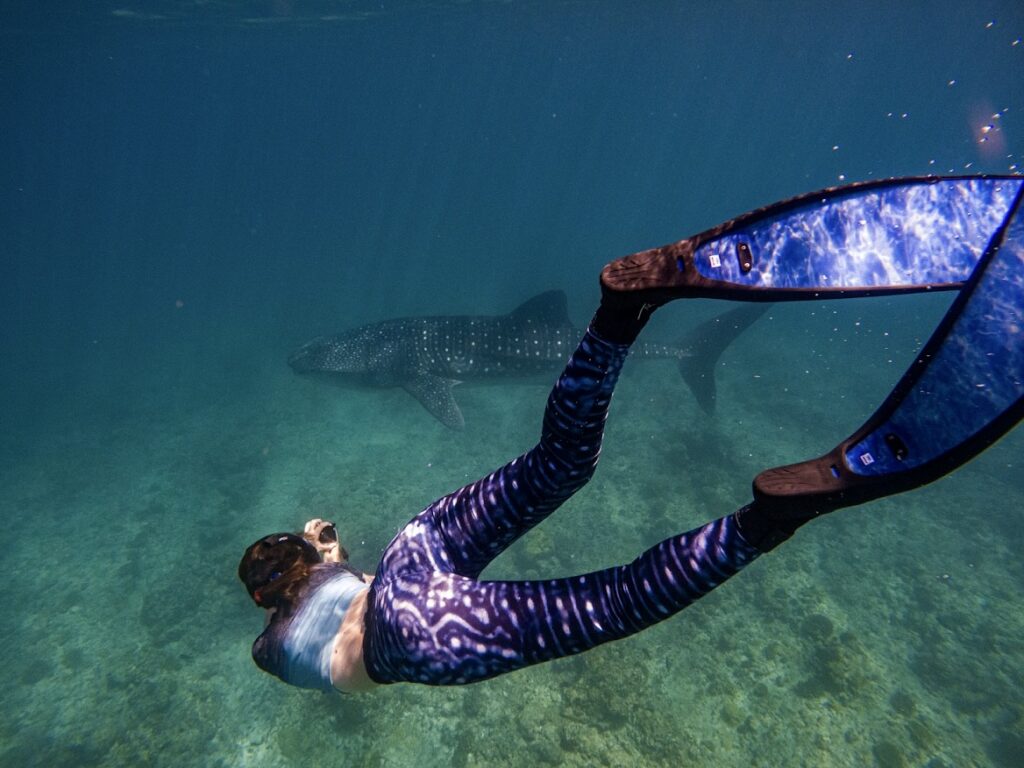
Collecting data on these elusive sharks is highly opportunistic, so sometimes the nature of this demands that you act fast to plunge into the water, camera ready, and swim to the shark. This slight urgency may not initially appear conducive to the act of freediving, but having the skills and thinking like a freediver most certainly does. For example, sometimes the shark may cruise for the entire encounter at varying depths, so in this instance being able to perform relatively successive duck-dives and hold my breath for a good amount of time is key. The urge to breathe and contractions are something that freedivers train to get comfortable with over time and for me, building up a CO2 tolerance has definitely been helpful for allowing me to stay longer with the shark and snap a good amount of ID photos and collect other data. From first hand experience, I can most definitely say that having this C02 tolerance helps when you are trying to tape measure the biggest fish on the planet!
When I approach a whale shark, I will take care to do this quietly, as whale sharks can become evasive when there is loud noise such as splashing, shouting and boat motors. Effective finning technique and streamline swimming all helps in minimizing disturbance to the shark as well as conserving energy. Any freediver will tell you that being relaxed is first and foremost the most important thing when preparing for a dive. Once I see the shark, its beautifully star-speckled body looming out of the blue, I’ll usually take a moment to assess the scene and relax before executing a vertical duck dive. Once at a depth where I am parallel with the shark, this is the moment to capture the ID. I will usually take a few of each side and keep at a good distance of 3 to 4 metres from the body, giving space to the individual should they choose to change direction.
Here it is important to mention that abiding by the whale shark encounter code of conduct is one of the most important things to remember to ensure that you as a freediver, or scuba diver, have a good encounter which does not disrupt the shark. As already mentioned, a quiet approach with as little noise as possible is ideal as well as giving 3 to 4 metre distance. Intentional obstruction of the shark is another big no-no, while it is very tempting to get a photo of that huge mouth, MWSRP advises that you do not obstruct the path of the shark as this will cause them to become evasive and possibly end the encounter for all. Swimming directly on top of the shark is not advised (unless the shark is at a depth of approximately 5 metres), and if you should need to change sides to get a better view, we recommend swimming around the back of the shark, taking care especially around that powerful sweeping caudal fin. The golden rule of whale shark viewing -and marine wildlife viewing in general- is to not touch the animal. I have seen countless encounters ruined by people intentionally, and unintentionally, breaking this rule at the expense of the whale shark’s comfort. Before you engage in an encounter, always ask for a briefing from your guide and seek local knowledge on the whale sharks of the area.
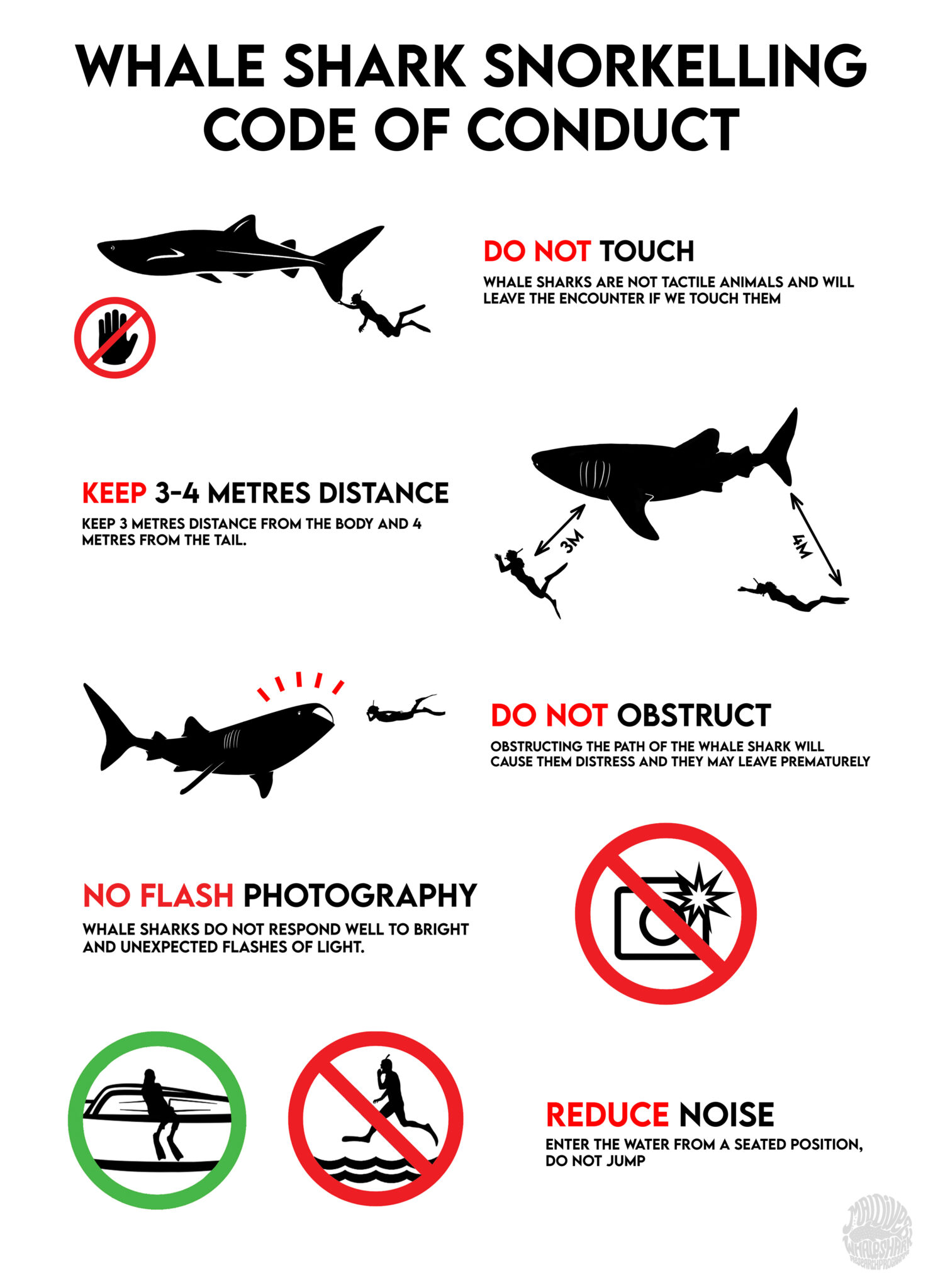
Working with the whale shark is such an immense gift to me, and I am constantly inspired by the fact that there is so much more to learn and that whale shark science has really only just begun to scratch the surface. We still don’t know a great deal about their lives, especially in their younger years as neonates, and key questions remain about reproductive habits . Here in Maldives we are so lucky to have a year round aggregation of juvenile whale sharks, with the highest re-sighting rate of individuals in the world, right here in the South Ari Marine Protected Area (SAMPA). It brings me immense joy to see the same individuals over and over again and even recognise a few just by looking at their spot pattern or past injuries. My hope for whale sharks worldwide is that their numbers will increase and their habitats will receive the true protection they deserve, and that this captivating species will ultimately thrive.
Ready to dive in with whale sharks? Get PADI Freediver certified and experience whale shark encounters unfiltered, just like Chloe.
This article was written by Chloe Winn, the Lead In-Field Coordinator at Maldives Whale Shark Research Programme, a research organisation, charity and registered Maldivian NGO. Chloe’s love of the ocean began from a young age on the southwest coast of the UK and grew rapidly after volunteering with MWSRP, travelling and completing freediving and PADI scuba diving qualifications.
Whale sharks are present all over the Maldives, however South Ari Marine Protected Area (SAMPA) is unique as this is a one of a kind, year round whale shark aggregation site. SAMPA (the largest MPA in the Maldives) is where MWSRP conducts most of its in-field surveys so that they can learn more about why the whale sharks are here. In the programme’s 15 years of research, encompassing 9384 encounters, MWSRP have come to believe that these predominantly juvenile male individuals are using the area as a secondary nursery.
